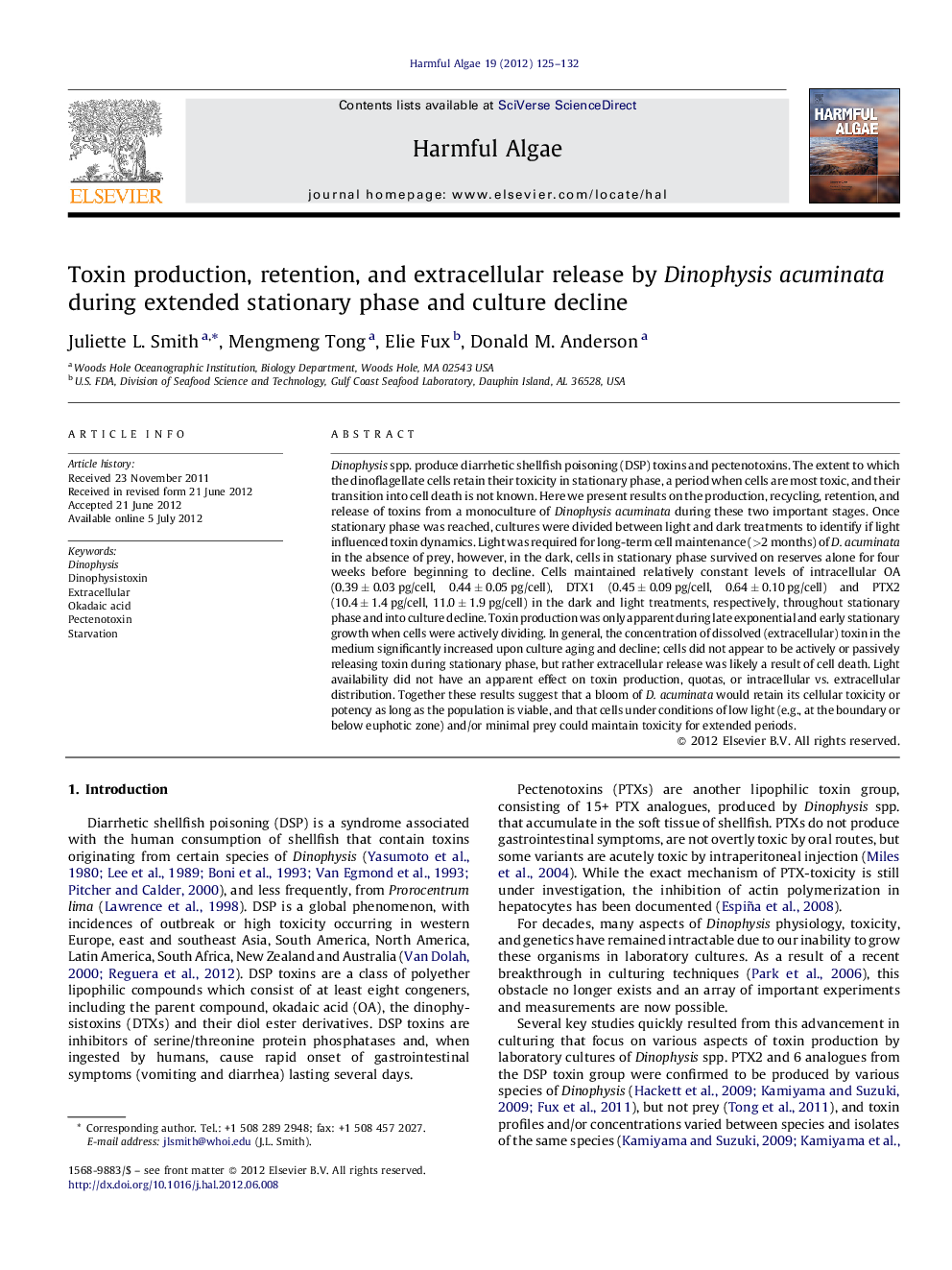| کد مقاله | کد نشریه | سال انتشار | مقاله انگلیسی | نسخه تمام متن |
|---|---|---|---|---|
| 4545523 | 1626951 | 2012 | 8 صفحه PDF | دانلود رایگان |

Dinophysis spp. produce diarrhetic shellfish poisoning (DSP) toxins and pectenotoxins. The extent to which the dinoflagellate cells retain their toxicity in stationary phase, a period when cells are most toxic, and their transition into cell death is not known. Here we present results on the production, recycling, retention, and release of toxins from a monoculture of Dinophysis acuminata during these two important stages. Once stationary phase was reached, cultures were divided between light and dark treatments to identify if light influenced toxin dynamics. Light was required for long-term cell maintenance (>2 months) of D. acuminata in the absence of prey, however, in the dark, cells in stationary phase survived on reserves alone for four weeks before beginning to decline. Cells maintained relatively constant levels of intracellular OA (0.39 ± 0.03 pg/cell, 0.44 ± 0.05 pg/cell), DTX1 (0.45 ± 0.09 pg/cell, 0.64 ± 0.10 pg/cell) and PTX2 (10.4 ± 1.4 pg/cell, 11.0 ± 1.9 pg/cell) in the dark and light treatments, respectively, throughout stationary phase and into culture decline. Toxin production was only apparent during late exponential and early stationary growth when cells were actively dividing. In general, the concentration of dissolved (extracellular) toxin in the medium significantly increased upon culture aging and decline; cells did not appear to be actively or passively releasing toxin during stationary phase, but rather extracellular release was likely a result of cell death. Light availability did not have an apparent effect on toxin production, quotas, or intracellular vs. extracellular distribution. Together these results suggest that a bloom of D. acuminata would retain its cellular toxicity or potency as long as the population is viable, and that cells under conditions of low light (e.g., at the boundary or below euphotic zone) and/or minimal prey could maintain toxicity for extended periods.
► Light was required for the long-term cell maintenance (>2 months) of D. acuminata in the absence of prey.
► In the dark, however, cells survived on reserves alone for four weeks before beginning to decline.
► Cells maintained at relatively constant levels of OA, DTX1, and PTX2 in both treatments throughout stationary phase and into culture decline.
► Toxin production was only apparent during late exponential and early stationary growth when cells were actively dividing.
► Cells did not appear to be releasing toxin during stationary phase, but rather extracellular release was likely a result of cell death.
Journal: Harmful Algae - Volume 19, September 2012, Pages 125–132